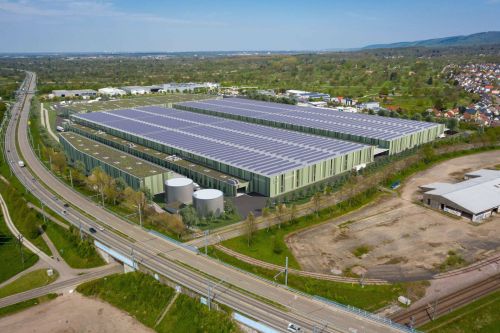Five questions about changes in perpetual usufruct
The bill entitled ‘the transformation of the right of perpetual usufruct into the right of ownership for land that has been built upon for the purposes of residential use’, which will in effect abolish perpetual usufruct, has been approved at the committee stage in the Seym and now awaits its second reading. In all probability around 2.5 mln households are from the beginning of next year to become owners or co-owners of the land on which their homes stand. Here are the answers to the most important questions regarding the transformation of perpetual usufruct into the right of ownership.
1. Will the conversion of perpetual usufruct into ownership be obligatory and who will it affect?
The conversion will be mandatory. By law, all those who use land on the basis of perpetual usufruct will become the owners of the plot, provided it is used for residential purposes. This will be automatic and no consent is required. The change will apply to land, on which stand both buildings that solely comprise apartments as well as buildings that have both apartments and service outlets (such as shops and service outlets on the ground floor of a residential building) as well as parking facilities. In a sense the owners of these outlets will also incidentally benefit from the law but at least half of the units have to be residential. Garages or outbuildings may also be built on the plot provided that they serve the residents. Those plots on which only commercial buildings stand such as shopping centres or office buildings, and those buildings that comprise only garages and parking facilities are not included in the act.
2. Will the conversion of perpetual usufruct into property be free?
Slogans such as ‘ the end of perpetual usufruct’ and ‘transformation of perpetual usufruct into property’ sound as if this is going to happen overnight and for free. But this is only half true. Indeed, this going is to change suddenly (on January 1st 2019) but it’s not the case that the land is going to become become the property of the current resident free of charge. Under the bill, there will be a conversion fee that will have to be paid over a period of 20 years.
3. How much will it cost to transform perpetual usufruct into ownership?
According to the bill, the annual conversion fee will be as much as the perpetual usufruct cost as of January 1st, 2018. The fee will have to be paid over 20 years, which means that we will pay the annual perpetual usufruct fee 20 times in exchange for the ownership of the land.
4. Will the annual transformation fee be permanent?
The perpetual usufruct fee is, in principle, 0.3-3 pct of the value of the plot depending on the purpose it was designated. For residential use, this stands at 1 pct. The problem comes when there is a revaluation of the land. When it hasn’t been done for many years, a revaluation may result in a huge increase in the fee – which could rise even several times. The new law removes this risk. The annual conversion fee to be paid over 20 years is to be equivalent to the the perpetual usufruct fee charged on January 1st, 2018, and it can only rise in line with inflation in property prices based on the property price index published by the Central Statistical Office. So, we needn’t worry about sudden increases in the fee and future rises will be solely dependent on changes in the market.
5. Can you get a discount if you pay the whole conversion fee in one go?
Under the act, the current landowners may grant discounts for payments made in advance. Such discounts can certainly be expected for those plots that are legally owned by the state treasury. Other landowners such as local government authorities can make their own decisions but they have been advised to do the same. And it’s worth looking at the possible savings, because they could be really high. With land owned by the state treasury, paying everything in the first year will result in a 60 pct discount. The total possible discount will be reduced by 10 percentage points every year. If someone pays perpetual usufruct of around PLN 1,000 annually, then instead of PLN 20,000 (PLN 1,000 over 20 years) they will only pay PLN 8,000 once. Open Finance calculated that this discount could be compared to placing money in a deposit account with an interest rate of 13 pct a year.






















































An open door to redefining the commercial real estate market in Poland
An open door to redefining the commercial real estate market in Poland
The investment slowdown in the commercial real estate sector that we have been observing in Poland for over a year is primarily the result of the tightening of monetary policy arou ...
Walter Herz
The retail sector is not slowing down
The retail sector is not slowing down
The pandemic, conflict in Ukraine as well as inflation and high interest rates that recent years have brought have reshaped the real estate market around the world. The global slow ...
Walter Herz
Retail parks – current opportunities
Retail parks – current opportunities
Over the last few years, retail parks in Poland were mostly developed in smaller formats, around 5,000 sqm, either adding to the existing retail landscape or introducing modern ret ...
Avison Young